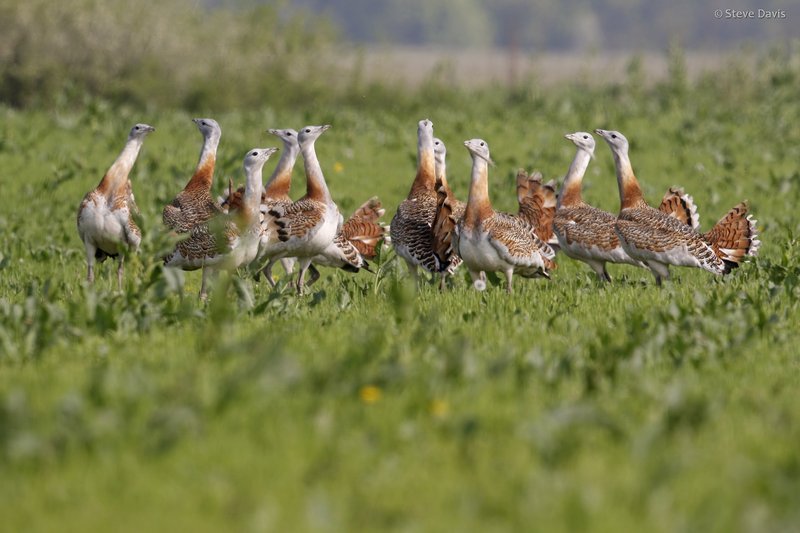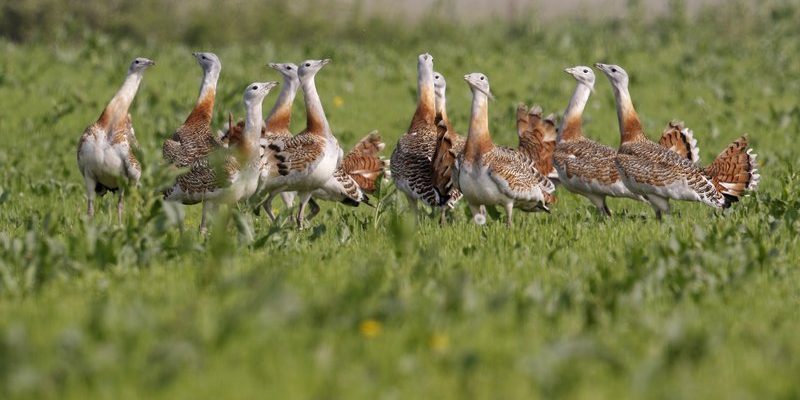
Bustards are fascinating and unique birds that often capture the attention of birdwatchers and nature enthusiasts alike. Imagine a creature that embodies the grace of an elegant dancer mixed with the robust presence of a guardian of the grasslands. These remarkable birds can be found in various parts of the world, most commonly in open savannas and grasslands. With their long legs, large bodies, and impressive wingspans, bustards have become symbols of beauty and resilience in the avian world.
When you think of bustards, picture them gliding effortlessly across wide expanses of land, their feathers catching the sunlight. These birds are not just large and striking; they also possess fascinating behaviors and adaptations that make them stand out in the bird kingdom. Let’s dive deeper into the characteristics, habitat, and intriguing facts about bustards that make them so special.
What Are Bustards?
Bustards belong to the family Otididae, which includes around 25 species. They are primarily ground-dwelling birds, which means they spend most of their time on the ground rather than in trees like many other species. Their size can be quite impressive, with some species, like the Great Bustard, weighing up to 40 pounds! This makes them one of the heaviest flying birds in the world.
These birds have a distinctive appearance; they are characterized by their long necks, strong legs, and broad wings. It’s not uncommon to see them strutting around in search of food, which includes a diet of plants, seeds, and insects. While they might look somewhat clumsy on the ground, they are powerful fliers and can soar to impressive heights when necessary, especially when escaping predators.
Physical Characteristics of Bustards
Bustards exhibit a range of physical traits that vary between species. For instance, while the Great Bustard is known for its impressive size and striking plumage, the Little Bustard is smaller and has a more subdued appearance. You might be surprised to learn that male bustards are often more colorful and larger than females, especially during the breeding season. This contrast is not just for show; it plays a crucial role in attracting mates.
During mating displays, male bustards puff out their chests and fluff their feathers to seem larger and more appealing. This behavior, called courtship display, is a captivating sight. Their vocalizations, often deep and resonant, add to the spectacle, making it an unforgettable experience for anyone lucky enough to witness it.
Habitat and Distribution
Bustards are primarily found in open habitats such as savannas, grasslands, and semi-deserts. They prefer areas with ample space to forage and escape predators. Depending on the species, you can find bustards in various regions, from the vast plains of Africa to the grasslands of Eurasia and even parts of Australia. Their ability to thrive in diverse environments showcases their adaptability. However, habitat loss due to agriculture and urban development poses a significant threat to their populations.
Understanding where bustards live is key to protecting them. In many regions, conservation efforts are underway to preserve their habitats and mitigate the dangers they face. Organizations work diligently to educate local communities about the importance of these birds and the ecosystems they inhabit. If you ever find yourself in a suitable environment, keep your eyes peeled; you might just catch a glimpse of these stunning birds in their natural habitat.
Bustard Diet and Foraging Behavior
Bustards are omnivorous, which means their diet consists of a mix of plants and animals. They primarily feed on seeds, leaves, and shoots but also indulge in insects and small animals when the opportunity arises. This varied diet helps them thrive in different environments and makes them adaptable foragers. They have an incredible ability to find food in the most unexpected places.
One interesting aspect of their feeding behavior is that bustards often forage in groups, which can help them spot potential threats more easily. By sticking together, they also have a better chance of locating food sources. Watching a group of bustards foraging together can be a delightful experience, full of spirited interactions and social dynamics.
Conservation Status of Bustards
Many bustard species face declining populations due to habitat loss, hunting, and human encroachment. The Great Bustard, for example, is listed as “Near Threatened” on the IUCN Red List. Conservation efforts are critical to preserving both their populations and habitats. Programs focused on habitat restoration, sustainable land use practices, and education are essential for ensuring the future of these majestic birds.
Conservationists are actively working in various regions to protect bustards and their ecosystems. These efforts include creating protected areas, promoting sustainable farming practices, and raising awareness about the significance of these birds. Community engagement plays a huge role in these initiatives, as local populations can often make a positive impact by participating in conservation activities.
Fun Facts about Bustards
Now, let’s spice things up with some fun facts about bustards! Did you know that the Great Bustard can reach speeds of up to 30 miles per hour when flying? That’s quite fast for such a hefty bird! Additionally, some species are known for their incredible displays during mating season, which can be quite a spectacle. Watching a male bustard perform its courtship dance is truly mesmerizing.
Another interesting tidbit is that bustards have excellent camouflage. Their plumage often mimics the surrounding grassland, making it hard for predators to spot them when they are resting. They can also run quickly, utilizing their strong legs to escape dangers. So, if you ever find yourself in a grassland, keep an eye out for these remarkable birds—you might just spot one while it’s blending seamlessly into its surroundings.
Threats to Bustard Populations
Bustards face a variety of threats, the most pressing being habitat destruction. As agricultural practices expand and urban areas encroach on their natural habitats, these birds are losing their homes. Additionally, hunting and poaching contribute to their declining numbers, as some cultures see bustards as a delicacy or trophy.
Climate change adds another layer of complexity to the threats bustards encounter. Changes in climate can impact food availability, breeding seasons, and habitat suitability. It’s a worrying trend that highlights the need for immediate conservation action to safeguard their future.
How to Help Bustards
You might be wondering how you can contribute to bustard conservation efforts. Becoming informed is a great first step! Learning about these birds and their habitats can help you advocate for their protection. Supporting conservation organizations that work on habitat restoration and education is another fantastic way to make a difference.
If you live in or near areas where bustards are found, participating in local conservation initiatives can have a meaningful impact. Volunteering your time or resources to help protect their habitats can lead to lasting change. Every little bit helps—not just for bustards but for the entire ecosystem they inhabit.
FAQ
What is a bustard’s primary habitat?
Bustards primarily inhabit open grasslands, savannas, and semi-deserts. These environments provide the necessary space for them to forage and evade predators. They prefer areas where they can easily find food and have adequate cover from threats.
How do bustards attract mates?
Male bustards use elaborate courtship displays to attract females. They puff out their chests, fluff their feathers, and perform vocalizations that can be quite mesmerizing. This display not only showcases their strength but also their health, making them more appealing to potential mates.
What do bustards eat?
Bustards have a varied diet that includes seeds, leaves, and insects. They are omnivores, so they adapt their feeding habits based on available food sources in their environment. This flexibility helps them survive in diverse habitats.
Are bustards endangered?
Some species of bustards are classified as threatened or near threatened due to habitat loss and other human-related factors. Conservation efforts are crucial to protect these magnificent birds and ensure their populations remain stable.
Can bustards fly?
Yes, bustards are capable fliers! Despite their large size, many species can fly well, reaching impressive speeds when needed. They use their flight ability to escape predators and to find suitable habitats.
How fast can a bustard run?
Bustards can reach speeds of up to 30 miles per hour when running. Their strong legs allow them to escape threats quickly, making them agile on the ground. They often rely on this speed, coupled with their camouflage, to evade predators.
What conservation efforts are in place for bustards?
Conservation efforts for bustards focus on habitat restoration, sustainable land use practices, and raising public awareness. Organizations are working to protect critical habitats and engage local communities in conservation activities to ensure the survival of these birds.

